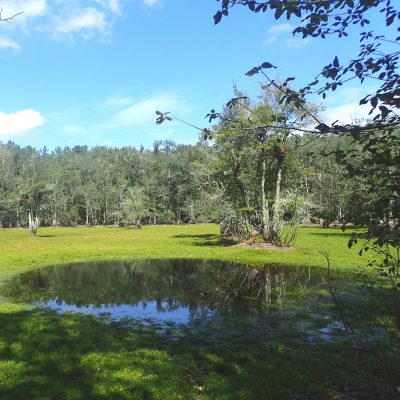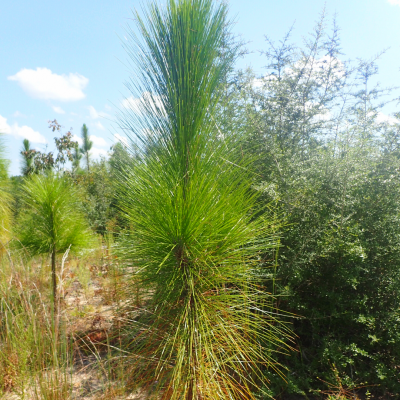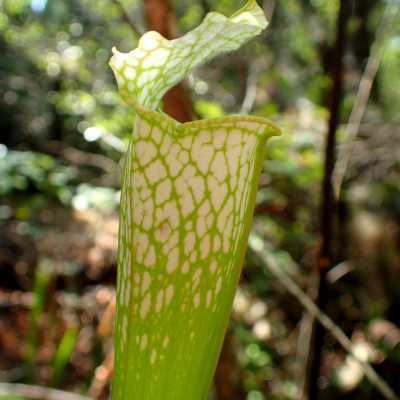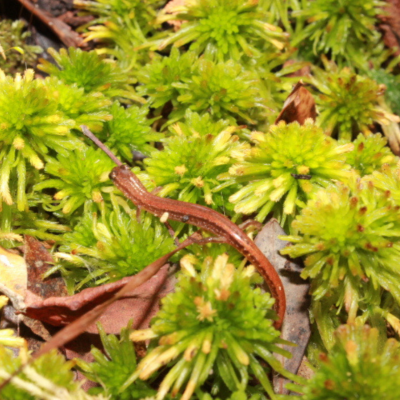Just as it is said, “Rome isn’t built in a day,” the gradual and steady acquisition of Florida’s lands builds our conservation legacy.
The strategic protection of the Wolfe Creek Forest adds to the network of conserved lands in the Florida Panhandle. The project was prioritized for acquisition in 2010, and this month with help of the Trust for Public Land and approval by the Florida Cabinet, another 1,786 acres will be acquired.
This project in Santa Rosa county contains 10,058 acres, of which 3,204 acres have already been protected. Wolfe Creek’s proximity to other conservation lands improves ecosystem connectivity and provides habitat for species like the Florida Black bear, Southeastern weasel, and Little Blue Heron.
Wolfe Creek is surrounded by Blackwater River State Forest to the east and Whiting Field Naval Air Station to the southwest. Within its boundaries runs 35 miles of streams that feed into Big Coldwater Creek and Big Juniper Creek – two major tributaries of the Blackwater River. These seepage and blackwater stream systems support numerous rare aquatic flora and fauna and are considered a focal habitat of the Florida Fish and Wildlife Conservation Commission’s Comprehensive Wildlife Conservation Strategy. The property also contains associated bottomland forest, floodplain swamps, and bay galls.
Acquiring the Wolfe Creek Forest project will conserve biodiversity, protect surface water, and enhance the quality and natural function of the land and water systems. And this project also benefits national defense! Whiting Field is the busiest air station in the world, and by preventing the development of adjacent lands like Wolfe Creek Forest, we make continued flight training possible.
The land will be managed by the Florida Forest Service (FFS) as an addition to Blackwater River State Forest. The primary land management goals are restoration, maintenance and protection in perpetuity of all native ecosystems, integration of compatible human uses, and insurance of long-term viability of rare populations and species considered rare.
With 12 archaeological sites, two of which are historic, including the Wolfe Creek Mill, and ten which are prehistoric, conservation of this property will provide resource-based public recreational and educational opportunities. If you like to hike, bike, and kayak, this property is for you! We can expect to see more public access and amenities in this area in the near future.
Most of the project is in various states of managed pine plantation and will be sustainably managed for silviculture (timber) practices. To restore the historic, native upland pine forests and sandhills and enhance recreational benefits, FFS will incorporate sustainable forestry management practices such as thinning the grassy understory, prescribed fire, and replanting of native longleaf pines. The return of this property to longleaf pine forest will have wide-ranging ecological benefits. Longleaf pine forests once dominated the southern United States but today they occupy only about 5% of their historical range. These forests are one of the most threatened and ecologically diverse ecosystems in the world and are home to many species found nowhere else on Earth.
Since 1972, The Trust for Public Land has protected more than 3.3 million acres and completed more than 5,400 park and conservation projects. The below photos were taken by Doug Hattaway with the Trust for Public Land.






